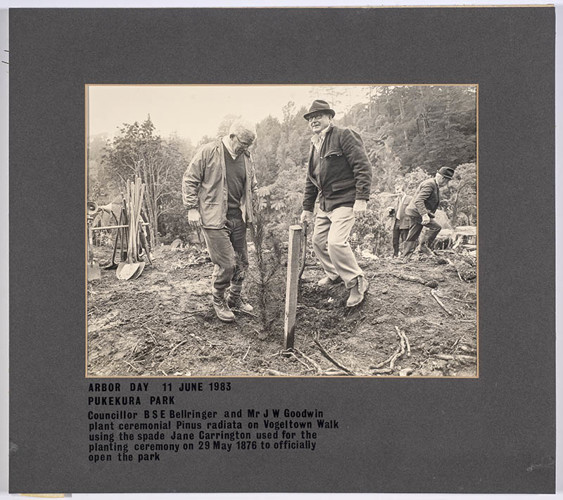
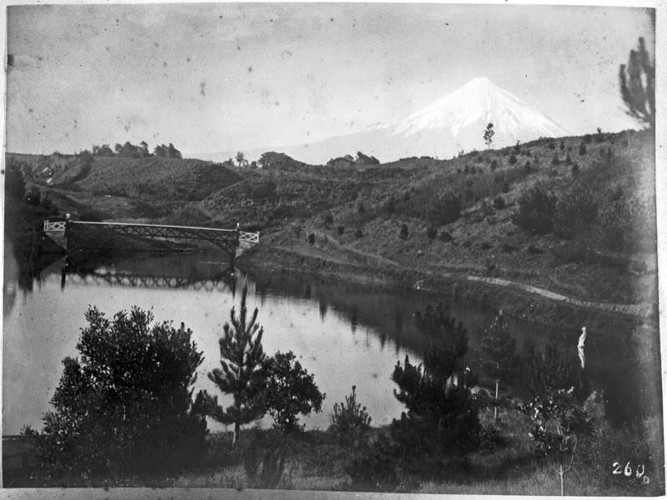
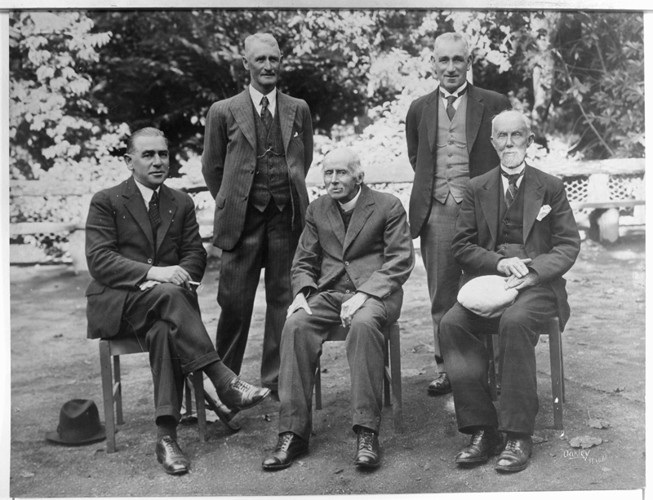
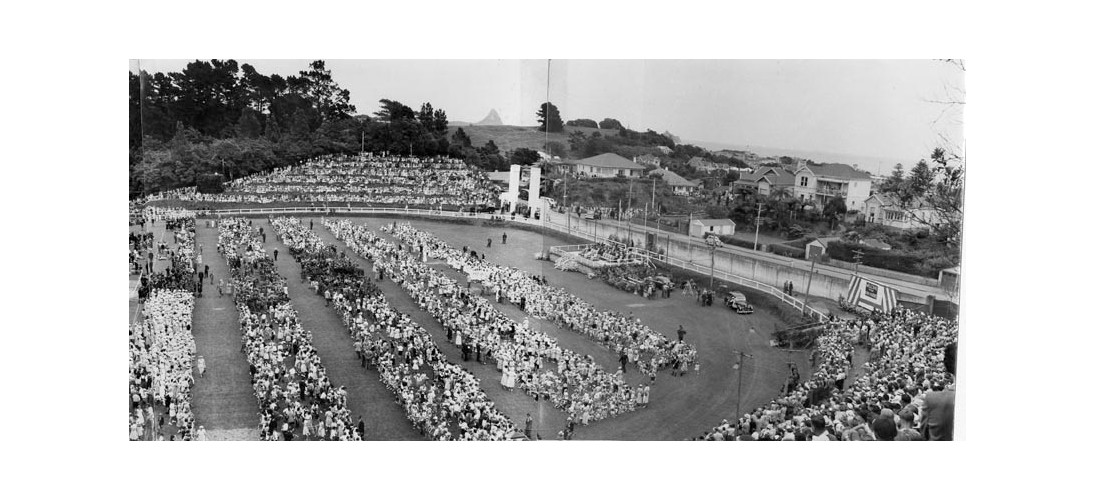
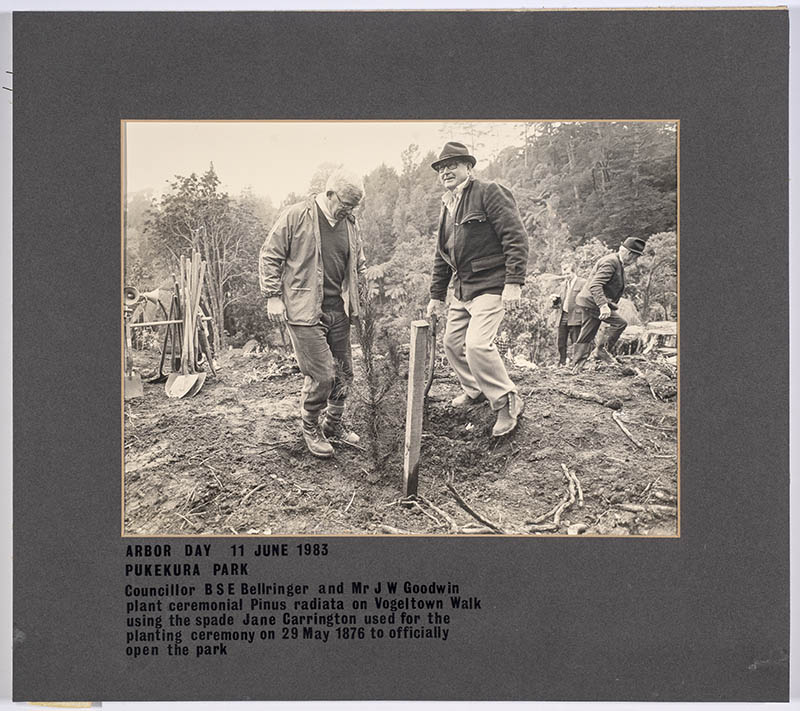

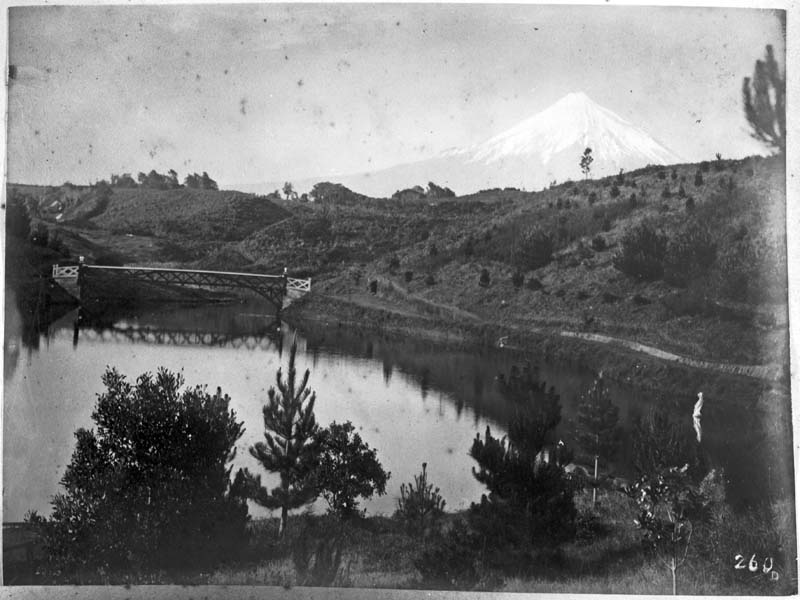
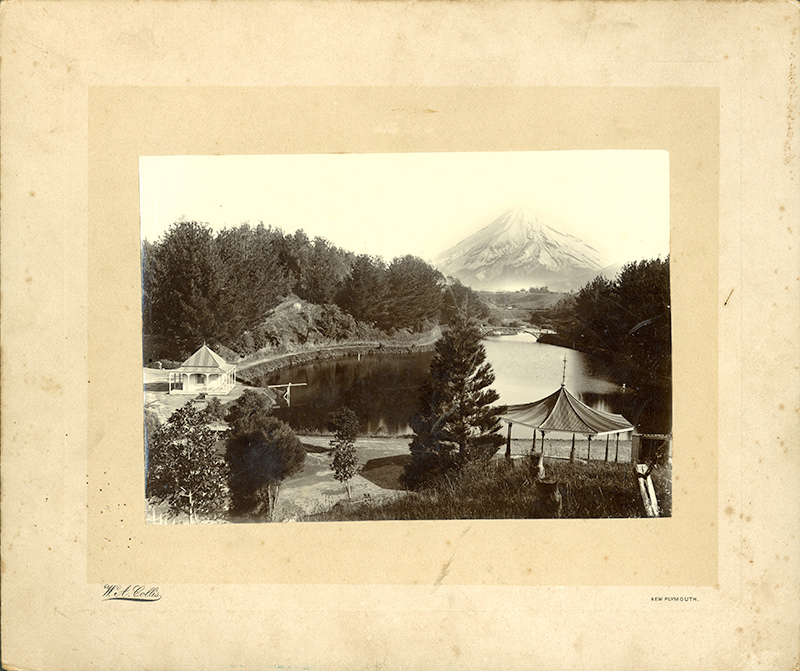
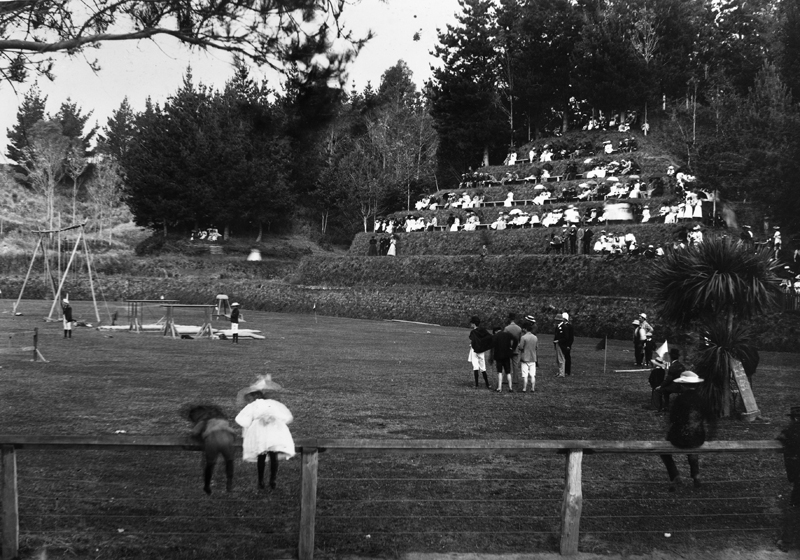
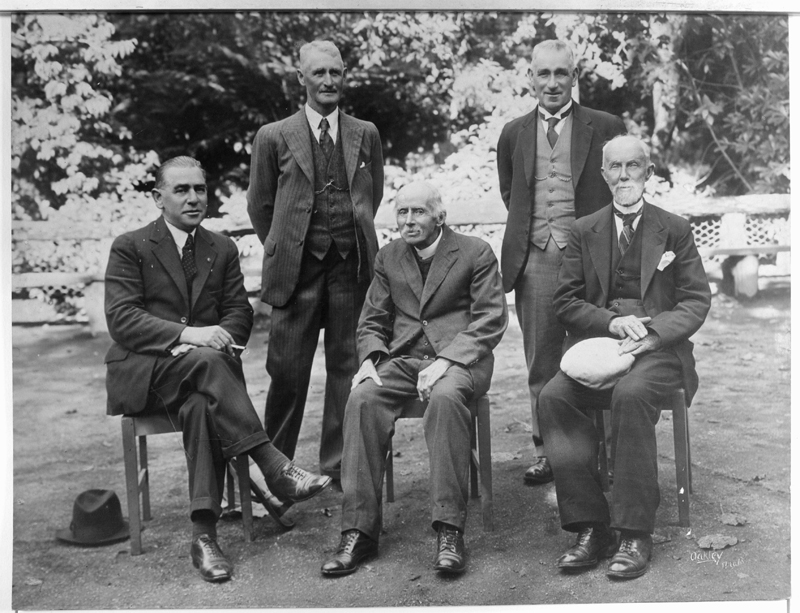
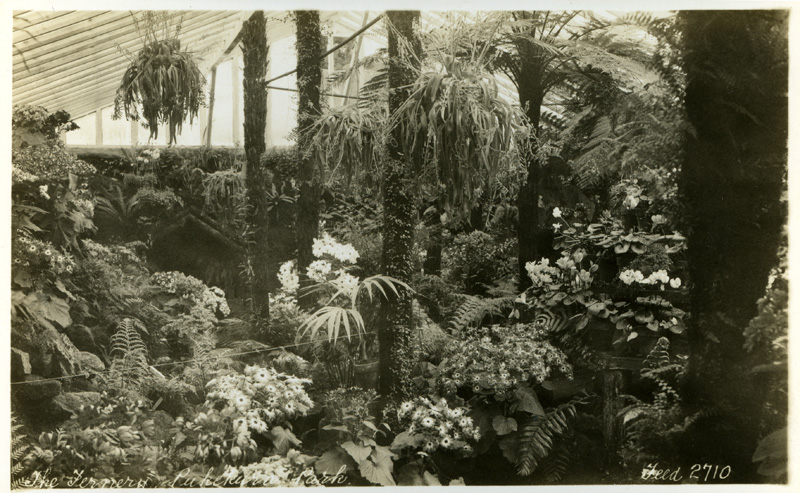
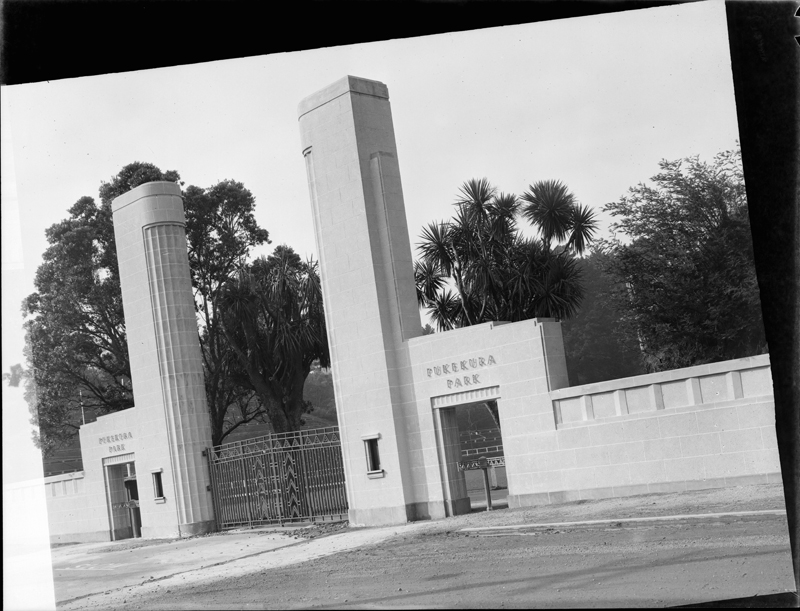
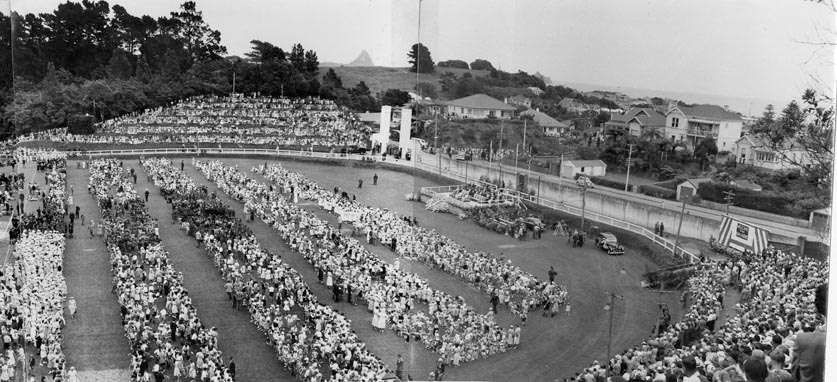
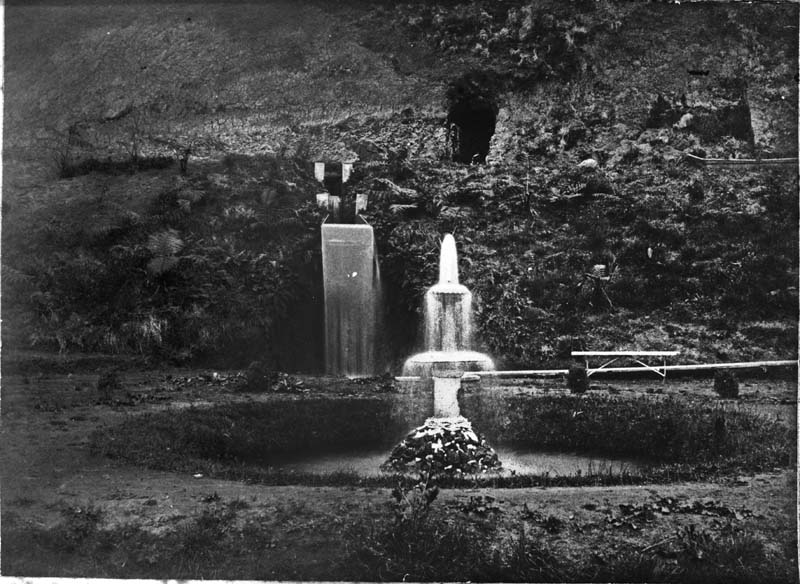
Bring the people back - that was Jack Goodwin's brief when he took over the reins of Pukekura Park in 1949. And he succeeded, triumphantly.
In June 2003, about 26 years after retiring, Jack became a Member of the New Zealand Order of Merit (MNZM) for his services to horticulture. But his time at the New Plymouth park didn't begin with such a flourish.
During World War Two, Pukekura suffered a decade of circumstantial neglect. Put simply, with all the fit young men fighting overseas, there weren't enough workers left to tend places like parks. And so, part of the 50-hectare botanical beauty was let go. The result was an over-grown jumble of weeds, vines, messy paths, scruffy trees and lakes filled with silt.
To many, the famous park had even become a scary place. "During the war years with the overgrowth, there were [homeless] people living in shacks in hidden corners and that sort of thing" says Jack, who worked in the park for 28 years. "Most of the people were too frightened to go through the park at night. A lot of them were even frightened to go through the park in the daytime. So people didn't visit the park the same. They had dropped off."
Jack took over from long-time curator Thomas Horton, who was in his 80s when he retired.
"The park had been developed and maintained during the depression with unemployed labour, but when the war came they had to let them go and some of the side gullies were completely overgrown" Jack says. "Some people just won't believe it, but there were kauris 12 feet (3.6 metres) high that were pulled right down to the ground with the climbers growing on them" he says of a line of native trees growing beside Pukekura Kindergarten. The list of pesky climbers include Traveller's Joy (Old Man's Beard or Clematis vitalba), Cobea scandens and convolvulus. "The first job was to clean up and release the good material and weed out the other material."
Jack and his workers cut back the unwanted trees, and recycled the leftovers. "We used the stakes for repairing the terraces, because the terraces had almost completely collapsed around the cricket ground. We rebuilt them with turf - they were always turf - but after I left they started to introduce timber to strengthen the support and left gaps between it so grass would grow, and they did a more permanent job."
The waterways had also become clogged up during the war. "The lily ponds up above the fernery were completely full of silt and the top end of the main lake had to be cleaned."
Opening up the park and letting in the light were only part of Jack's plan to bring the people back to this special place. "The first meeting of the Pukekura Park committee meeting was crucial. The over-whelming opinion of the committee was that they wanted me to do the best I could to bring people back to the park. They wanted me to get together a report for the next meeting and I said, 'No, I can't do it'. So I asked them to give me three months."
During that time, Jack discovered a lack of fences, a dark forest of macrocarpa, small bridges with rotting rails and a larger one needing a fresh splash of red. "Even the painting of the Poet's Bridge had been deferred until I came" he says, of the park centrepiece, which he believes should always be scarlet. "When you have got so much green around you, you must have the colours appropriate to contrast, and white or pastel is easily disfigured."
One of the first suggestions he made to the committee was to put a fountain in the lower lake to commemorate the Queen's visit. "The second item was an illuminated waterfall" he says. Both have become stars of the park, appearing again and again on postcards.
In the beginning, the fountain plan was immersed in controversy. Jack, a sensitive man, was cut deeply by the cruel criticism. "They [residents] wrote to the papers and told me to go back to the South Island with my ideas about a fountain in the lake" he says.
Letters to the editor in 1955, played out like a long rally in a bitter tennis match. "Sir - the founders of our park who worked so hard to fashion it in the early days would, I am sure, be dismayed now. When I was there last, I was horrified by the tawdry string of coloured lights round the lake and am more horrified now by the destruction there for the sake of a fountain, which will be seen by comparatively few people, and never by the old," wrote ‘Methuselah’ on 31 March that year.
"...it filled me with disgust to think of the shocking waste of money and the destruction of the peaceful serenity of the park...To call it a memorial of the Queen's visit is wrong. Her visit will forever remain in our hearts without any reminders of it, such as this garish fountain," wrote ‘Non-Subscriber’ on 4 April.
"...I must confess that as an old timer, I was at first disturbed by the removal of the lovely fern-fringed island from this area, but now that the fountain is completed and proves to be an ornate and dainty triumph of human skill and artistry" said F. Schwieters on 5 April. "...The fountain enhances in a most striking way the natural beauty of the surroundings and derives from those surroundings an attractiveness which it would not otherwise possess," said R.H. Quilliam on 5 April.
Other letters, signed under the pseudonym of the ship their family arrived in Taranaki on, expressed their wrath for the celebratory programme of entertainment on the fountain's opening night. Many called for rain to ruin the festivities. That didn't happen and about 6000 people turned out to watch the illuminated water feature do its public dance. Jack Goodwin was at the controls. "There were people who have told me since that they saw combinations that night they never saw again" he laughs.
One of the reasons this gentle man took the barbs so badly is because of his painful shyness and fear of being in the public eye. "An inferiority complex was my big problem" he ventures. "It seemed to develop at secondary school. "So, therefore, I had to do everything so thoroughly that there would be few questions asked at council - because of my embarrassment at speaking in public. Yet speaking to university students was no trouble, but saying things in public ..." He shudders at the prospect.
Before coming to Taranaki, Jack was the superintendent of grounds at Massey College (prior to it becoming a university), where he also gave lectures on amenity horticulture, plus plant identification, handling and use.
The years before that, he worked for the parks department in Christchurch, training apprentices and retraining returned soldiers from World War Two. Jack himself didn't go overseas to war. An ankle injury from playing rugby prevented this, but not from serving on the home front. He spent two years in the army with an artillery regiment in Blenheim. "I finished up as quarter master sergeant" he says.
Even though he missed the fighting, he got to see the effects of that terrible war first hand while working with the servicemen. "The ones that were shell-shocked were sometimes quite a tragedy."
In many ways his training roles helped him fulfil the promises of youth. As a schoolboy, Jack had been a fine student with dreams of becoming a teacher. The Great Depression of the 1920s and 30s ruined his plans. "As it turned out when I got to that stage, teacher training colleges were closed" he says. Instead, Jack tried his hand at digging for gold, classing wool, working in orchards and finally turned to horticulture.
This also led to love. He invariably gets choked up when he talks of his late wife Maude, whom he met on his first day working at Kōwhai Nursery in Christchurch. "She started the same day" he says. "We built up a friendship. It never wavered or changed" he says, the words wedged in his throat. Jack and Maude were married in 1940.
Eventually, the plantsman earned a National Diploma in Horticulture, winning national honours on the way. Despite his phobia of public speaking, it was obvious Jack was destined for greater things and his expertise finally led him to Pukekura Park.
He clearly remembers the day he arrived in Taranaki. "We went to New Plymouth in June 49 and I went up with the furniture wagon and when we stopped in Stratford, it was snowing and the whole of the street was white."
After a cold start, Jack quickly warmed towards his new home, where he was welcomed and offered help. So, like every worker who spends a long time at Pukekura, the park eventually possessed him. "I think it was part of me really."
Consider the additions and improvements made during his leadership:
The illuminated fountain
The illuminated waterfall
The filling in of a lily pond to make the Hatchery Lawn (flat, open space was at a premium)
The children's playground and paddling pool
The waterwheel
Brooklands Zoo
Even the Bowl of Brooklands stage was put in during his tenure. But that's another story entirely.
While Jack is proud of these efforts, he doesn't take all the credit for these projects. "Another thing that helped me in those early stages was the service clubs - I would like you to pay tribute to the service clubs" he says, mentioning Jaycees, Rotary and Lions clubs and other groups.
Other supporters were those who spent time on the New Plymouth parks and reserves committee. Some of the long-standing members included, Bill Dean, Audrey Gale, Don Saxton, Percy Stainton, Grant Maxwell, Fred Parker and Brian Bellringer. Brian was also involved in the administration of Taranaki and Central Districts (CD) cricket and the pavilion is named after him.
For Jack Goodwin, cricket often meant more criticism. "The cricket wicket is the one that upsets a lot of people too. They know more about it than anybody. There's always something wrong with it."
Once, he faced it first-hand from a CD captain, whose name he can't remember. "He told me that the wicket was going to do this, that and the other thing." Jack blocked him effectively. "I said 'There will be a little bit of activity in the morning, you might get a little bit of variation in the spin, but it will settle down and it will play like a billiards table'." And Jack was right.
Even worse than being in the firing line was seeing the park or its wildlife come under attack.
"So many of the public were very appreciative of what we did and that's why it hurt so much when we got trouble with the vandals." The worst case was an attempt to kill a white swan. "They [the offenders] had been shooting it with a bow and arrow. It was wounded and we managed to clear it up, but it died shortly afterwards" Jack says, explaining how the graceful birds were brought up from Lake Ellesmere in Christchurch.
"The last pair were put out on Lake Mangamahoe because of the interference from the vandals. We did have a pair of white ones in here, but they never succeeded in rearing any because the only time we could get them going up on the little island by the rhododendrons, the vandals got over there and wrecked the nests. It used to take a fair while to incubate the eggs."
Jack was gutted when people damaged the park. "It was just like cutting one's throat I suppose. The keener a person is, the more he does with the community, the worse it hurts I think."
But the flipside of that is how much Pukekura Park is appreciated by people far and wide. A treasured moment was in Colombo, Ceylon (now Sri Lanka) when returning from a three-month horticultural trip to Britain in 1957. A guide showing him around Colombo presumed he was Australian and recommended that if Jack ever crossed the Tasman Sea, he should visit New Plymouth to see one of the most beautiful parks in the world. What did the guide say when Jack told him he was curator of that park? "Nothing, I think. I was too overwhelmed to speak," he says.
Another time he felt that way was when the Goodwin Dell was named after him. "I was tearful almost" he says. "I get so emotionally involved, particularly when myself or my family is involved."
Or when he thinks of living in his beloved park. "I never felt more content than on a winter's evening when the ducks went to sleep early, the water was still and the sun was setting as I was going home from work and there was a pink glow on Mt Egmont reflected in the lake," he says.
These days, Jack (92 when interviewed in 2004) lives on the other side of the North Island in a wee self-contained flat attached to daughter Judith's home in the Hawke's Bay. But Pukekura Park isn't far away. Above his head is a Christmas present from his park staff in 1950. It's a mirror picture of the tranquil scene that is forever in his mind.
Sadly, Jack Goodwin died on 8 November 2005.
Scanlan, A.B. (1978). Pukekura: A centennial history of Pukekura Park and Brooklands. New Plymouth: New Plymouth City Council.
Pukekura Park Board (1929). History of Pukekura Park and the ceremony of vesting in New Plymouth Borough Council, Thursday 17th October, 1929. New Plymouth: Pukekura Park Board.
Quinn, P. (1999). Pukekura and Brooklands: a park for all people. Thames: Quintessential
Please do not reproduce these images without permission from Puke Ariki.
Contact us for more information or you can order images online here.